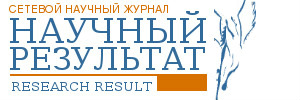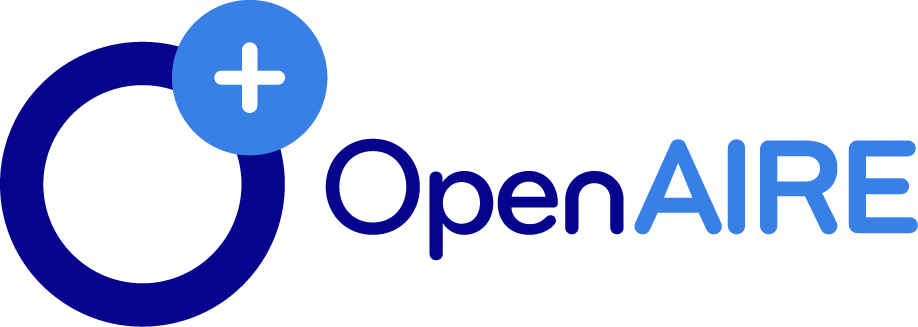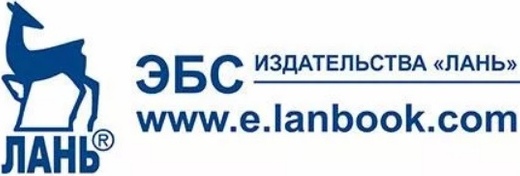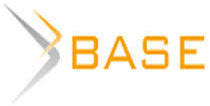ОБУЧЕНИЕ ДОШКОЛЬНИКОВ ГРАМОТЕ С УЧЕТОМ НОВЫХ ТРЕБОВАНИЙ ОБРАЗОВАТЕЛЬНОГО СТАНДАРТА
Aннотация
В статье анализируются современные изменения в предшкольной подготовке детей по родному языку. Автором исследуются проблемы овладения дошкольниками грамотой и пути их преодоления. В статье выделяются основные действия, которым нужно научить детей для дальнейшего овладения родным языком в школе, обосновывается их необходимость. Автор предлагает и систематизирует дидактические средства формирования у дошкольников умений, необходимых для правильного чтения и письма, и дает им обоснование на основе анализа зарубежных и отечественных исследований. В статье выделяются методические ошибки педагогов в обучении детей дошкольного возраста грамоте и приводятся образцы формирования способа звукового анализа слова, обучения чтению и подготовки к каллиграфическому письму. Входящий в содержание методический материал предназначен для использования педагогами в дошкольных образовательных учреждениях в процессе подготовки детей к обучению в школе.
Ключевые слова: Стандарт дошкольного образования, языковая ошибка, алгоритм чтения и письма, занимательное задание
К сожалению, текст статьи доступен только на Английском
In modern Russian education a tendency of pre-school subject learning is growing every year. Elementary school teachers expect (often demand) of first graders ability to read, do sound analyses of words, to count, perform simple operations on numbers. In the modern state standard of preschool education there is no requirement of prior subject training children, but it indicates the need for the formation in preschool children knowledge and skills that are in demand in the future (school) education [7]. In addition, in regulations there are more states about continuity between preschool educational institution and elementary school [5,6]. One of these regulation concerns the development of children basic knowledge of the Russian language, and teachers face the problem of teaching preschoolers literacy. Certainly, there are new education centers offering this service. However, according to the results of observing the teachers’ work in these organizations and on the basis of school teachers’ assessment of readiness of first graders mastering the Russian language it is possible to conclude that this training is not competent. Preschoolers mix the important concepts of "sound" and "letter", they have trouble with the sound analysis of words, making it difficult mastering reading and writing, children reading mechanically without understanding their mistakes. Teachers must retrain students that psychologically difficult for everyone. So in this situation it becomes necessary to study the content and ways of teaching preschool children literacy.
This article examines the main actions that need to teach children to further mastery of the mother tongue in school, the necessity of their formation, suggests appropriate methods of didactic work. Also, the text provides examples of professional activity of teachers on teaching children to read and write.
The research of these issues was carried out based on the analysis of foreign and domestic scientific-methodical literature on problems of preschool education and during the observation of teaching preschoolers in Russian pre-school institutions and empiric work in urban centers on preparing children for school. As a result of theoretical and empirical research the following conclusions were made.
In preschool age, there is the feature of mastering the language by children: they tend to pay attention to the meaning of the word, and not to its form, so for them the word and what it means, is absolutely the same. In the period of preparation for learning the native language it is the form of the word that the whole work is focused on and not on its meaning [1]. This contradiction leads preschoolers to errors and creates difficulties for the educators. For example, a teacher asks which word is longer "ribbon " or "river"? The children answer: "river". What sounds make up the word tree? The children answer: "The trunk and branches". To overcome difficulties it is necessary to teach children to tell the word from the object that calls it. To this end, the educator is recommended to: 1) use a graphical model of words that will help to shift the attention from the meaning of the word to its shape (for example, ribbon □□□□□ and river □□□□); 2) do not abuse subject illustrations in the process of sound analysis of words; 3) give special task, which help children to distinguish the word from its denotation. For example, to count the number of beads in the beadlace and the number of sounds in the word beads; to correct the statement that the word drum consists of sounds “boom–boom–boom”; to prove that the word five has not five sounds, etc.
Language teaching preschoolers includes teaching of reading and printing. Reading is the recreation of the sound form of the word based on the graphical model, which implies the need to introduce children both with letters and speech sounds, which each letter represents. In addition, it is necessary to make sure that the children didn't mix the letters and sounds, and the teacher is unacceptable to do this as well. For example, we cannot say that the first sound in the word hour is h, or the first letter is [a] or to determine the number of sounds in the word eight as 5, or to identify the first sound in the word she as [s], etc. In Russian language children often confuse consonants and their letters, for example in the word lamp the say the first sound [el], and also sound [j] and letters which mark it, for example in the word Yla [jula] (whirligig).
It is better to introduce children the term of "sound" as the smallest part of speech with the association. Preschoolers are explained that sounding words consist of sounds, as houses are composed of bricks. It can be compared sounding words which differ with only one sound, for example, tap and map. Words similar in sound, but they are different because first sounds are different. It is advisable for an adult to intone these sounds in the word to show the difference: [t-t-t-]ap and [m-m-m]ap, the word tap starts with the sound [t], and the word map with [m]. To highlight the sounds you can also use the technique of onomatopoeia. For example, to highlight the first sound in the word bug, you can ask the children to buzz, so they gave the sound [b]. For better understanding it is necessary to use models of sounding words. For training in sound analysis it is useful to offer game tasks: to find a house for the word (for example, fox - □□□□□ or □□□ or □□□□?); find the sound in the word which has been lost (for example, tree,: □?□); to find friends to the word mouse (find the word with the sound m).
In the sound analysis children can mix hard and soft sounds, for example, in the Russian word pin, they can identify the first sound [p] but not [p’]. In this case, you can ask the child to pronounce the word with the sound [p]. Get a distorted word, the preschooler will be convinced that he was mistaken; and then with the help of intonation together highlight the right sound. It may happen that the child instead of one sound is allocated a syllable-merging. For example, in the word cup preschooler selects the first sound [k˄]. This is a natural problem, because the sounds in the syllables merge join maximally, they are difficult to separate. In this case the intonation and word models help.
Some teachers teach reading by making children to repeat syllables after them, which is incorrect. European graphic is sound-letter, not syllabic, i.e. in the language, the smallest units are the sound and the letter, not the syllables. If a child is made to repeat the syllable, they will be perceived it as a single sound and not be able to read another kind of a syllable, if you rearrange the letters or add a letter. However, the unit of teaching reading should be the syllable, because to understand what sound the letter in a particular word means is possible only by its position in the syllable. In the Russian text we understand how to read the letter (firmly or gently) according to the subsequent vowel letter. For example, in the word ball letter b is pronounced as [b], and in the Dick as [d’] because o means hard reading and i means soft reading. Therefore, for training a correct reading it is necessary to form in preschoolers ability to distinguish sounds on hardness\softness. This can be done by creating a problem situation: offer words which differ only with hard and soft sounds (do not print these words!), select all sounds from the words, build their schemes and ask the question: "What sounds help the words be different?". For example, the words luk (onions) and l’uk (lid). Children can name the different sounds, but they cannot explain the difference between them. The teacher reports that the sound [l] and the sound [l’] different sounds and to distinguish them, people agreed that [l] is hard sound, [l’] is soft.
For assimilation by preschool children of the above submissions, it is useful to develop their phonemic hearing: the ability to differentiate hard and soft sounds in speech and to distinguish them from each other [3]. In the process of selecting words to train phonemic hearing is necessary to remember that sound is well recognized at the beginning and at the end of the word not the syllable merger, it is more difficult to hear it in the middle of the word and in syllable merger. So the words have to offer in the corresponding sequence, for example, for training in the identification of the sound [t]: trumpet, pot, battle, drums, tank, tin, station, desk.
For learning to read it is necessary to develop in preschool children skills that are included in this process: 1) to identify the letters in the word; 2) to determine the boundaries of syllables in a word; 3) to correlate letter with sound (focusing on its place in the syllable); 4) to join the sounds in a syllable; 5) to join the syllables in the word and understand what it means. From the algorithm of reading it becomes clear that to learn to read independently and correctly is quite a difficult task and long process. Every action can cause difficulties:
1) preschoolers can forget letters or mix them up (for example, like English letters P and B, and T, b and d, w and v, i and l, etc.);
2) children may incorrectly determine the syllable boundaries, for example, in the words mother and monkey there are two vowels, but they form different syllables mo-ther and mon-key;
3) preschoolers may forget to look at the next letter, because the field of view of the starter reader is one letter (not a syllable);
4) the fourth action can cause "torment of fusion" and the child says the word with separate sounds, for example, m-o-th-er;
5) because reading is quite a long process, after the third syllable, the child may forget what the first syllable was;
6) there may be difficulties with understanding words, as preschoolers have small vocabulary. They can also pronounce the word with the wrong accent. For example, read not a baby, and the baby, and they will not understand what they read.
Mentioned difficulties must be overcome in joint activity as it corresponds to the nature of formation of any cognitive action [2]. The teacher is recommended:
1) to repeat the letters with children through a variety of games;
2) to divide words for reading into syllables, with vertical bars (for example: ri | ver);
3) to skip consonants in words and to offer to define with vowels letters what consonant sound is hiding behind the letter: hard or soft (e.g., _en, r_bb_t, etc.), then substitute consonants; to distinguish vowels with "signal" (other) colour, for example: pen, flag, thick; to look up only vowels in the words;
4) before reading to carry out training in sound synthesis; merge difficulties can be overcome in the process of reading: you can advise the child to get ready to pronounce a consonant sound, but say the following vowel (it will not be quite natural, but they will join the sounds);
5) first learning to read monosyllabic words, like home, three, dog etc., then move on to polysyllabic words;
6) to put the stress in words and correct children if they read with the wrong emphasis; also to use illustrations to understand words better.
From the action of reading it follows that preschool children need to know about the syllabic structure of the word. To do this, the teacher tells the children that words can be divided into parts and demonstrates this by chanting. For example, the teacher chants the word to-ma-to, with pauses between the syllables, and said that the word has three parts, the first is [təʹ], the second is [ma:], third is [təʋ]. To support we can show that in the diagram: □□|□□|□□. It is possible to use association as well: words are divided into syllables like a string of beads. It is not good to use the reception of claps for counting syllables, as children can unmistakably clap only after the teacher, or can clap, already having counted the syllables in a different way. It is also necessary to remember that the number of syllables in a printed word is determined by the number of vowel letters. For training in the mastering of syllabic structure of words, we advise the following tasks: a) to find the same syllables in words (for example, pencil and pen, mother and father; b) find for each word a house, which shows the number of syllables; b) to "put" in the magic box the words that include the syllable [tou], and it will open if the children do it correctly; g) the syllables in the words are messed up, preschoolers are invited to place them correctly (for example, the first syllable is tter, the second bu, get the word butter), d) geese really want to learn to speak, but can only say "ha", and we offer preschoolers to find words with the syllable ha.
Teaching writing in preschoolers preparation should not be included due to the following reasons. First, children have still weak motor muscles of the hand and the lack of coordination of movements for the prescription of letters, therefore, the children will make "doodle". As pre-school children are engaged 2 times a week (according to the standards), they have not formed a full skill, and as a result, children do not receive a positive result. A negative result in the learning has a negative impact on future learning motivation [4]. Secondly, there are options of writing letters, which are different in different literacy programmes in primary school. If the way of writing letters taught in the kindergarten is different from the way, which will be taught in first grade, children will suffer. However, to prepare the preschoolers’ muscles for this activity teachers must develop their fine motor skills of hands and coordination of movements. For this it is useful to outline the contour of a pattern of loops; to paint different elements of letters; to outline the elements of letters (ovals, loops, hooks, etc.) by the points-to targets.
Since many preschool children tend to leave “signature” on gifts and crafts, kids try to print the words. Printing is easier to preschool children than writing, so if there is a need or necessity, learning to write is replaced by a printing instruction [10]. Printing and writing are the same process, only the shape of the letters is different, and teaching this process also relies on its essence.
Printing is the process of reverse reading, which creates a graphical model of the word based on the correlation of sound and letters for its designation. In order to learn how to type the words, preschoolers need to master a number of operations: 1) to determine the word sounds; 2) to determine the sequence of sounds in the word; 3) select a letter to identify each sound in the word; 4) to print all the letters correctly; 5) to check the spelling of the word. Each of these operations causes children difficulties. The selection of sounds from words is difficult for preschoolers, as it is impossible to visually rely on the structure of words for its analysis. Therefore, children begin to mix up sounds and letters or just do not "hear" the sounds in the syllables. In the end, they miss the letters, e.g. ct (cat); cannot determine the sequence of sounds as a result the make errors, for example the type pecnil (instead of pencil). For the correct typing, they need to separate hard and soft consonant sounds and to know the rules of designating soft consonants in writing. All this is due to the previously described principle of positional graphics. So children need to be taught selecting of the letters, otherwise they have type errors like gim (gym). The cause of these errors lies not in the fact that children are inattentive, but that they do not possess the knowledge or skills to identify soft sounds in writing. Also children have difficulties with the designation of the sound [j] in typing. Preschoolers often print: joung, jellow etc. Teachers, of course, correct mistakes, but preschoolers can't understand them and continue to do, if they don't know or don't understand the rules. Along with this, children only begin control their speech, they tend not to check typed letters [9]. As a result, they do not notice their own mistakes.
It follows that for learning correct printing it is necessary to train children in the sound analysis of words, in checking the order of sounds before typing, and to accompany that with the materialization of sounds in the form of "houses" for words. Preschoolers should also be familiar with the rules of the graphics and to teach to read what they wrote for the purpose of self-examination.
Thus, for successful kids’ reading and writing teacher should teach preschoolers to distinguish between word and its denotation, the concept of "sound" and "letter"; work linguistically correctly with sounds and letters (to characterize, to correlate these terms) and teach to read by sound method. Because preschool children have no educational motivation, it is necessary to teach them to read and print words in the form of a game but using challenging entertaining tasks [8]. Following these guidelines, teachers achieved good results, and all participants of the educational process will have the pleasure of working.

















Список литературы
Список использованной литературы появится позже.